Over the past decades, there has just been one major use for bubble wraps, and that is protecting goods while shipping them. Because many people feel there are no other uses for bubble wraps, they tend to throw them away immediately they receive and unwrap their goods. They feel the job of the bubble wrap is done once the goods have been shipped and delivered.

Nevertheless, you can use bubble wraps for other things. Many DIYers have been exploring the use of bubble wraps, as they use them for different DIY projects. In addition to protecting goods from potential damage when they drop on the ground, bubble wraps have other useful properties. One of the secret properties of this item that many people do not know about is temperature regulation.
Bubble wraps have the ability to regulate temperature, and this can come in handy when trying to repurpose it. Bubble wraps do a good job of keeping things cold. The bubbles (which are closely packed air pockets) act as highly effective insulators. Air is a very poor conductor of heat, which is why the bubbles prevent heat from passing through and, hence, helping to preserve cold things.
Interestingly, this does not work in only one way. Because of their great insulating capacity, bubble wraps can also keep things hot. They are insulators, and they prevent heat from entering or escaping. This means they can preserve the heat of any item. Hence, bubble wraps come in handy when trying to keep something hot or cold.
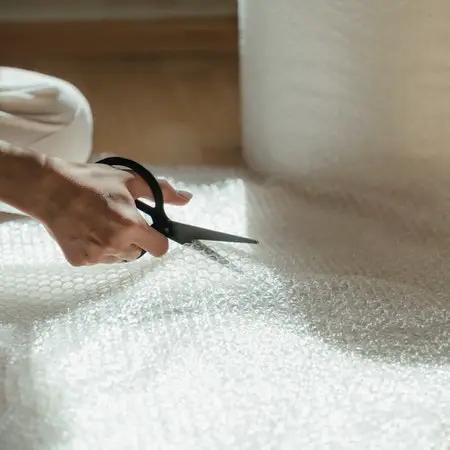
However, bubble wraps have other great properties that help with temperature regulation. If you want to know how a bubble wrap helps to keep things hot or cold, keep reading. In this guide, you will how bubble wrap serves as an insulator. With this information, you will have more uses for this item that always goes to the trash after it delivers your package to you safely. You will no longer be throwing them away but be keeping them for future use.
Insulation Basics
To know how bubble wraps do their little magic of keeping things cold or hot, you need to know the basics of insulation and how it works. First, you need to understand the fundamentals of heat and how it travels. Heat has three major ways it moves. Heat moves through radiation, convection, and conduction.
Irrespective of the mechanism in which heat is traveling, it usually travels from warmest to coolest. Heat always tries to balance the overall temperature of the space. If it is an item, it would move from the warmest part to the coolest part, ensuring even temperature on the item.
Insulations, on the other hand, helps to reduce the pace at which heat travel. They slow down the movement of heat to keep a cooler location cool for a longer period. Insulators work by absorbing heat and, hence, preventing the heat from getting to the cooler part. Furthermore, insulating materials reflect heat waves, and this helps to regulate temperature. By reflecting the heat waves, the heat cannot get to the cooler location.
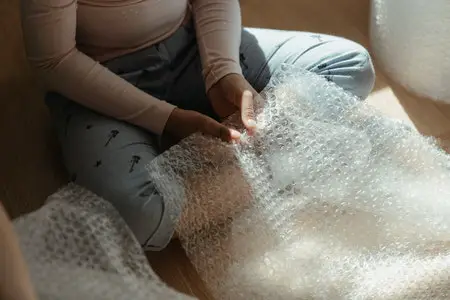
This works both ways. If you have a cold item in an insulated space or material, the material will reflect external heatwaves and prevent them from getting into space.
If you have a hot item in the insulated space or material, the material will reflect the heat waves from the item and prevent them from getting out. This is basically how a cooler works. This is why you can store cold drinks in a cooler box and it would remain cold for a long time. You can also store hot food in the cooler box and it would remain hot for a long time.
Several different materials are used in the insulation process. Some of those materials include:
1. Cellulose Insulators
Cellulose insulators are packed closely together to hinder airflow. These insulators are safe for the environment, thanks to their environmentally friendly properties. Nevertheless, cellulose insulations are not packed so closely that there is no space for air bubbles. Because of how densely packed they are, it is difficult for heat to travel through them.
2. Spray Foam Insulators
A spray form is another great material used to make an insulator. Spray foam has a chemical reaction that makes them expand when sprayed. When they expand, they will create air pockets, which helps to slow down the movement of heat from one point to another. Spray foam also creates a watertight seal and air seal to further reduce the pace at which heat can travel through the material.
3. Rigid Foam Insulators
Rigid foam also makes good insulation. They have small air pockets and they are positioned like slabs. Rigid form insulation is highly durable and ideal for unfinished spaces.
Bubble Wraps as an Insulator
Now, let us explore the insulation properties of bubble wrap. As we mentioned earlier, bubble wrap serves as an excellent insulator, which is why it can keep things hot or cold for a long time. You might be wondering how it does this. Why and how does bubble wrap lock out heat and keep things cold or hot. To start with, we will explain how bubble wraps are made.
Bubble wraps are made up of two things – air and plastic. They serve as great insulators because air is a very poor conductor of heat, and they have many air pockets. The poor heat conductivity of air makes it a great insulator. When the air is even lock in tiny spaces such as it is in bubble wrap, it becomes more effective at keeping heat out. When trapped in a small space, the air is static, which means air cannot go in or come out.
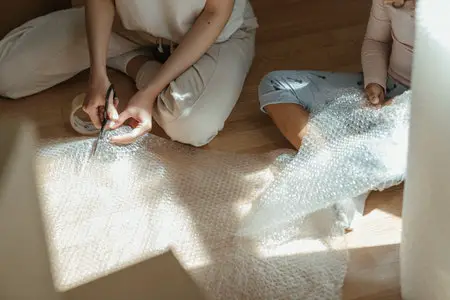
Heat can move from one place to another when air molecules bump into themselves and transfer heat energy. In an open space, the air has an unlimited amount of molecules that it can bump into and share energy with while air trapped in a little space has a limited amount of molecules it can crash into to share energy with. This is the mechanism behind bubble wrap. They have air trapped in tiny spaces, which does a great job of holding onto heat instead of allowing it to move from one point to another.
You can also use bubble wraps as a seal to limit or completely stop the flow of air. However, you have to seal and apply it well to achieve a good result. In addition to preventing heat from passing through, bubble wraps can also prevent air from passing through. They work as an insulator by ensuring the heat does not get to where the cold item is. This prevents the heat from traveling in the direction of cold items.
Hence, technically, bubble wrap does not keep the cold in. Instead, it shields the cold item from heat. This means external heat cannot get to the item, not that it has a special power to keep things cold. This is the mechanism of how they help to regulate and control temperature. This same thing applies to when you store a hot item in bubble wrap. The bubble wrap does not have anything to keep the item hot, rather, it prevents the heat from the hot item from escaping into the air. If the external environment is cold, it also prevents it from getting to the hot item, which prevents temperature equilibrium from taking place.
What Can I Use a Bubble Wrap for?
Now that you know some of the amazing properties of bubble wraps, you might be wondering what you can do with your discovery. For decades now, bubble wraps have always ended up in one place – the trash can. Once your goods are being delivered to you, you open your package, tear out the bubble wrap, and that is it for the bubble wrap. Bubble wrap is already serving a major purpose, which is to protect your item while being shipped. However, there are varieties of other things you do with bubble wraps.
Know you know that bubble wraps do a great job of keeping heat out. They can preserve your cold or hot item for a long time. Hence, what are its uses? In what areas does this useful item come into play? In this section, we will answer all of your questions. We will walk you through some of the use cases of bubble wraps besides protecting your goods during shipment and how you can use it in your home.
Increase the Efficiency of Your Refrigerator
One of the most important uses of bubble wrap is to keep your refrigerator efficient. When the lining of your refrigerators has a hole or is exposed, heat will penetrate and this will reduce its efficiency. To prevent this, you can use bubble wrap to seal the lining of your refrigerator. Lining different parts of your refrigerator with this material can help maximize the efficiency of your refrigerator. It would help to keep the things in your refrigerator colder.
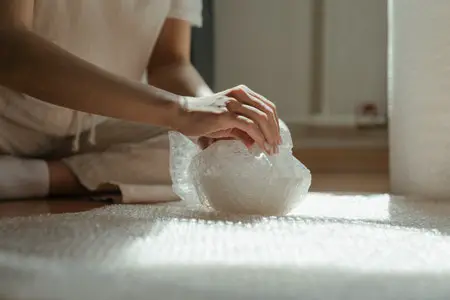
You can put this material at the bottom, drawers, and shelves of your refrigerator to prevent any unwanted heat from finding its way into your refrigerator. In addition to keeping the things in your refrigerator cold, bubble wraps will also provide additional layer protection for your fridge. It will also help to protect other fragile things in your fridge.
Putting the bubble wraps at the bottom, shelves, and drawers of your fridge will also make your cleaning process much easier. To clean your fridge, all you have to do is to remove the bubble wrap. Whatever dirt or debris that ought to be on the shelves, bottom, or drawer of your fridge will be on the bubble wrap, which allows for easy cleaning.
Prevent Damp in Your Toilet
Do you experience a ‘sweating‘ toilet or bathroom? If you do then you can fix this issue using bubble wrap you would usually just bin.
Many people have a messy, damp bathroom because of fluctuating temperatures. Fortunately, you can avoid this by using some bubble wrap.
To do this, make sure the toilet tank is empty and use bubble wrap to cover the sides. For it to stick, you need to use glue. With this simple hack, the bubble wrap will regulate the temperature of your tank and prevent any issue of condensation. You will be completely clear and free of condensation.
Preserve Frozen Food from the Grocery Store
You can use bubble wrap to line your grocery bag to make it an effective cooler. Whenever you go grocery shopping, you do not have to rush home because you do not want your frozen food to defrost or get spoilt.
You can use bubble wrap to wrap your frozen items to prevent them from defrosting. With this, you will no longer have to be in a rush while commuting home. You can use it to wrap things like ice cream, milk, frozen chicken, turkey, and more.
To Keep Warm When Camping
Bubble wraps also come in handy when camping. While camping, you can wrap yourself up in bubble wrap. This might sound a little bit strange, but it comes in handy. It will help to keep you warm and cozy while glazing at the stars and enjoying a beautiful evening.
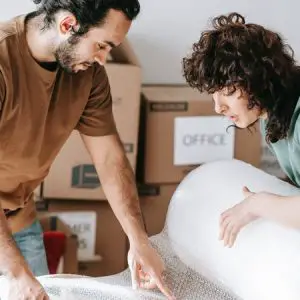
You can also use bubble wrap to line your sleeping bag. This will provide you with an additional layer of insulation while you are out on a cold night. It would help to trap the heat emanating from your body to keep you warm while preventing cold from getting through your sleeping bag. With this, you will enjoy a warm and comfortable sleep all through the night.
Protect Your Plants in Harsh and Frost Weather
Who would have thought that bubble wraps could come in handy in the garden? Bubble wraps have many uses in and around the home. If you have a garden or some flower vests around your home, you can use bubble wrap to protect your plants against harsh and frost weather. You can use bubble wraps to create a tent to keep frost away from your lovely plants.
With a wire and bubble wrap, you can make a nice shelter in preparation for the harsh weather. You do not have to wait for the harsh weather to come before doing this. With this hack, the bubble wrap will trap heat to provide your plants with a cozy environment when things get ugly.
Insulate Your Windows
You can also use bubble wrap to insulate your windows. To do this, spray some water on the window and press the bubble wrap in to secure it firmly. With this, drafts will no longer find a way into your house.
It will also help to lock in heat during the winter. If heat is constantly escaping through your window during the winter, it would ramp your electricity bill significantly, as your HVAC system would be doing more work to keep your house warm. It would also come in handy in the summer by keeping your home cool. It would lock heat out, ensuring your home is always cool.
Keep Greenhouse Warm
Bubble wrap also provides additional layer protection for greenhouses. If you want to give your greenhouse the additional protection it needs, you should cover the walls with bubble wrap.

By using bubble wrap to cover the walls, you will be able to prevent heat from escaping during winter and, hence, provide your plants with a convenient environment to grow healthily and beautifully. Since bubble wrap helps to regulate and control temperature, you can use it to maintain the optimal temperature in your greenhouse.
Prevent Frozen Pipes
Interestingly, bubble wraps can save you from the issue of frozen pipes. To save yourself from the issue of frozen and broken pipes, you can use bubble wraps to wrap your pipes. With the temperature regulation property of bubble wrap, wrapping it around your pipes will help to keep them at a sustainable temperature. With this hack, you will no longer have to deal with the hassle of frozen pipes. This trick will not only prevent your pipes from getting frozen but also save you some cash, as frozen pipes break easily. Hence, you can bid farewell to broken pipes during the winter, thanks to bubble wraps.
Maintain Warmth at Night
Bubble wraps also come in handy in keeping you warm at night. For an additional layer of insulation while sleeping at night, place a sheet of bubble wrap between your comforter and sheet. This would help to trap the heat your body emits and keep you warm all through the night. This is a great solution for those that are habitually cold. Since heat cannot travel through bubble wraps, it will reflect your body heat to you, and this will provide you with a cozy and warm environment.
Keep Beverages Cold
Another great use for bubble wrap is to keep beverages cold. You can make a great makeshift cozy by using bubble wrap to wrap your glasses or soda cans. By wrapping your drinks with bubble wrap, you can keep them cold for a long time and also prevent condensation. With this, you would say goodbye to drinking room temperature drinks.
Place It on Your Windshield for Easy Defrosting
With the use of bubble wrap, you can save yourself a whole lot of time defrosting your windshield. One major hassle for car owners during the winter is scraping their windshield. This is a time-consuming and energy-consuming task to do during the winter, and it is one of the biggest pains most people experience in this period.
To save yourself a lot of time and energy, you should place bubble wrap on your windshield and window.
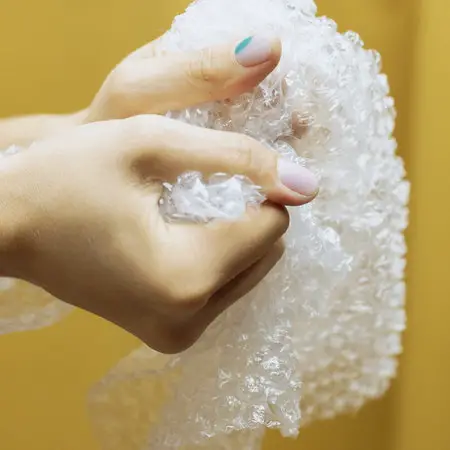
With this simple trick, you will no longer see ice all over your windshield when you wake up in the morning. The insulation property of bubble wraps will ensure no ice sticks to your windshield. When you place a sheet of bubble wrap on your windshield, all you have to do is to roll it up in the morning and your windshield will be completely free from ice.
There are many use cases for this wonderful and useful material; these are just a couple of use cases. With a few sheets of bubble wraps, you can accomplish a wide range of things. The uses of this material can only be limited by your imagination. It has endless possibilities. By just walking around your home, office, or workshop, you can find more use cases for this material. It comes in handy in different areas.
Conclusion
We are sure you have learned a lot from this guide. Many people do not know how important and useful bubble wraps are, as they think this material is only used to protect goods during shipment. As you can see, there is more to bubble wraps. You can do a whole lot with them. With the knowledge that you can use bubble wrap to keep things hot or cold, you can find more uses for them in your home.
Bubble wrap has good insulation properties.
The tiny air pockets on it do a great job of reducing the pace at which heat is transferred from one air molecule to another. Many people find the use of bubble wraps strange or trivial, but that is because they do not see the great potential it holds.
With the information you have amassed in this article, we believe you will no longer be throwing away your bubble wraps whenever you receive a package. You might need to accumulate them to execute some projects while some projects require only a few sheets.
Once you discover other things you can do with this material, you will go in search of it in the market. Its temperature control and regulation properties are very useful, and there are so many ways and options to explore its uses.
